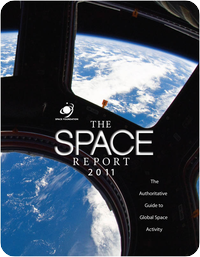Spotlight
What Next for the International Space Station?
Written by: developer
 The final flight of the Space Shuttle Atlantis in July 2011, momentous in its own right, was also a transitional moment in the life of the International Space Station (ISS). In November 2010, the ISS marked its tenth year of continuous crewed operation, most of which had been dedicated to construction efforts. With the retirement of the Space Shuttle and the completion of U.S. assembly work on the ISS (Russia plans to make some further additions in the coming years), the five primary partners – Canada, the European Space Agency (ESA), Japan, Russia and the United States – have shifted focus to ISS utilization. All intergovernmental partners have committed to a 10-year life extension of the ISS through 2020.
The final flight of the Space Shuttle Atlantis in July 2011, momentous in its own right, was also a transitional moment in the life of the International Space Station (ISS). In November 2010, the ISS marked its tenth year of continuous crewed operation, most of which had been dedicated to construction efforts. With the retirement of the Space Shuttle and the completion of U.S. assembly work on the ISS (Russia plans to make some further additions in the coming years), the five primary partners – Canada, the European Space Agency (ESA), Japan, Russia and the United States – have shifted focus to ISS utilization. All intergovernmental partners have committed to a 10-year life extension of the ISS through 2020.
In its first 10 years, the amount of scientific research that could be performed on the ISS was limited by construction activity. The extension through 2020 allows the six-person ISS crew to focus on executing the station’s mission as a science laboratory. The program partners expect research aboard the ISS to yield results in a wide range of areas including drug and vaccine development, improvements of materials used for a variety of applications, better understanding of cancer cell growth and technology demonstration for new space sensors and propulsion systems. For example, the Russian space agency Roscosmos plans to conduct 172 experiments in ten fields of science between 2011 and 2015 using the Russian portion of the station.
The ISS extension also broadens the community of nations and organizations that are able to access and use the ISS as a research platform. ESA has begun a three-year program that facilitates experiments aboard the ISS conducted by the 27 members of the European Union and by individual European states that do not currently support the space station. ESA hopes that this program will both expand the amount of science conducted on the station and provide ESA with a revenue stream to help fund the agency’s contribution to ISS operations.
In the United States, the NASA Authorization Act of 2010, passed by Congress and signed into law by the President, requires that at least 50 percent of the U.S. research activity aboard the station be used for non-NASA experiments. In order to manage this utilization, NASA is establishing a nonprofit organization to act as an intermediary between NASA and the scientific community. In the coming decade, the ISS is expected to both demonstrate its continuing legacy as a successful international partnership and provide vastly expanded research results.
This information – and many more interesting and informative facts about space and the space industry can be found in The Space Report 2011: The Authoritative Guide to Global Space Activity. Click here to learn more.
This article is part of Space Watch: August 2011 (Volume: 10, Issue: 8).


